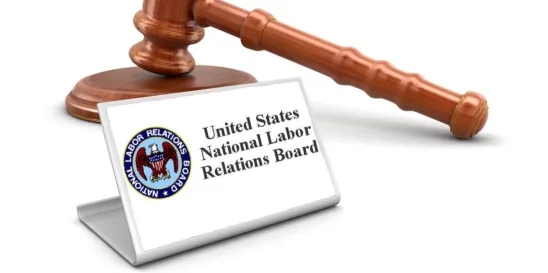After a flurry of pro-employee National Labor Relations Board (“NLRB”) decisions, the Fifth Circuit gave employers a glimmer of hope, rejecting the Board’s recent rule issued in Tesla, Inc., 371 NLRB No. 131 (2022) that effectively put every employer’s appearance, dress code and uniform policy in jeopardy of violating Board law if it could be read to limit employees’ ability to wear union apparel or insignia in any way unless the employer is able to meet the high burden of demonstrating that “special circumstances” existed to justify the policy.
The Tesla, Inc. Decision
In Tesla, addressed at greater length in our prior post here, the Board purported to return to Republic Aviation, 324 US 793 (1945), establishing a rule that any employer’s uniform or dress code policy is presumptively unlawful if it can be read “in any way” to prohibit employees from wearing union insignia unless an employer can prove that its policy is justified by special circumstances. The Board also explicitly overruled Wal-Mart Inc., 368 NLRB No. 146 (2019), a two-year-old Trump Board decision, that held that an employer’s facially neutral dress code policy limiting the size and appearance of union apparel or insignia but not outright prohibiting it was not unlawful. Under Walmart (and applicable to Tesla), if the Board determined that an employer’s policy was facially neutral and nondiscriminatory, the balancing test was the end of the analysis; however, if the Board found that the policy was not facially neutral and banned union apparel, the policy could still withstand scrutiny if “special circumstances” justified the policy. The Board’s decision in Tesla effectively eliminated the initial balancing analysis and, instead, stated that employers must justify every policy the result of which is any restriction on union apparel or insignia, whether expressed or implied, and regardless of its facial neutrality and non-discriminatory status, may be a violation of Board law. At issue in Tesla was the Company’s dress code which required employees to wear plain black or Tesla-branded black t-shirts, and the Board found that facially neutral rule unlawful because by requiring black Tesla t-shirts or plain black t-shirts the rule implicitly and explicitly prohibited employees from wearing black union shirts, even though Tesla also permitted employees to wear union stickers on their shirts and union hats to work.
The Fifth Circuit’s Rebuke
Tesla filed a petition for review with the Fifth Circuit where a unanimous panel overruled the Board’s decision. Ruling for Tesla, the Fifth Circuit held that the National Labor Relations Act “does not give the NLRB the authority to make all company uniforms presumptively unlawful.” The Fifth Circuit found that the Board distorted the balancing test described above, to ignore the employer’s legitimate interest to have a policy restricting – not banning – employees’ use of union apparel and insignia. Citing decisions in multiple other circuits, the Court refused to enforce the Board’s prohibition of facially neutral dress code policies, especially where the policy permits employees to attach union insignia in some way, as was the case in Tesla. This latter point appears to be an olive branch to the Board because, while the Court reversed its decision, it emphasized that content neutrality, nondiscrimination, and freedom to attach expressive union insignia to any piece of the uniform are key considerations as to a policy’s lawfulness. In making this point the Fifth Circuit expressly endorsed the now defunct Walmart decision that Tesla overturned.
The Fifth Circuit also rejected the Board’s holding that any dress code that required employees to wear company hats or shirts was a violation of the Act, absent special circumstances. The Court rejected the notion that unions or employees were permitted to utilize any medium of clothing simply because the employer was using it too. The Fifth Circuit held that where employees may still wear stickers or buttons on their employer mandated hats or t-shirts, the employer’s rule requiring a specific name branded uniform item was not unlawful.
Doctrine of Nonacquiescence
The Tesla reversal opens the door for employers to defend appearance, dress code, and uniform policies if they have the financial means to do so. The NLRB maintains and applies a policy that is known as the “doctrine of nonacquiescence,” which means that the Board only abides by judicial holdings interpreting or applying the Act by the Supreme Court – not federal circuit courts. The reversal here is now good law in the Fifth Circuit but, pursuant to the nonacquiescence doctrine, the Board will continue to follow and enforce its rule established in Tesla, unless and until Tesla is overturned by the Board or by the Supreme Court. Employers are thus stuck with the Tesla “special circumstances” standard unless and until they can present their case before the Fifth Circuit.
Where do we stand?
By the Fifth Circuit’s decision, the Court refused to enforce the NLRB’s Order requiring Tesla to rescind its dress code policy. The Board now has the pressure to either continue enforcement of Tesla and risk additional reversals in other circuits, which may prompt the Supreme Court to intervene, or it can selectively enforce the rule against employers who may be less inclined to fight the rule. At the very least, employers can take solace that the Fifth Circuit remains a viable option if faced with similar facts as that faced by Tesla. We will continue to monitor the Board’s enforcement of Tesla and provide updates as necessary.





 />i
/>i

